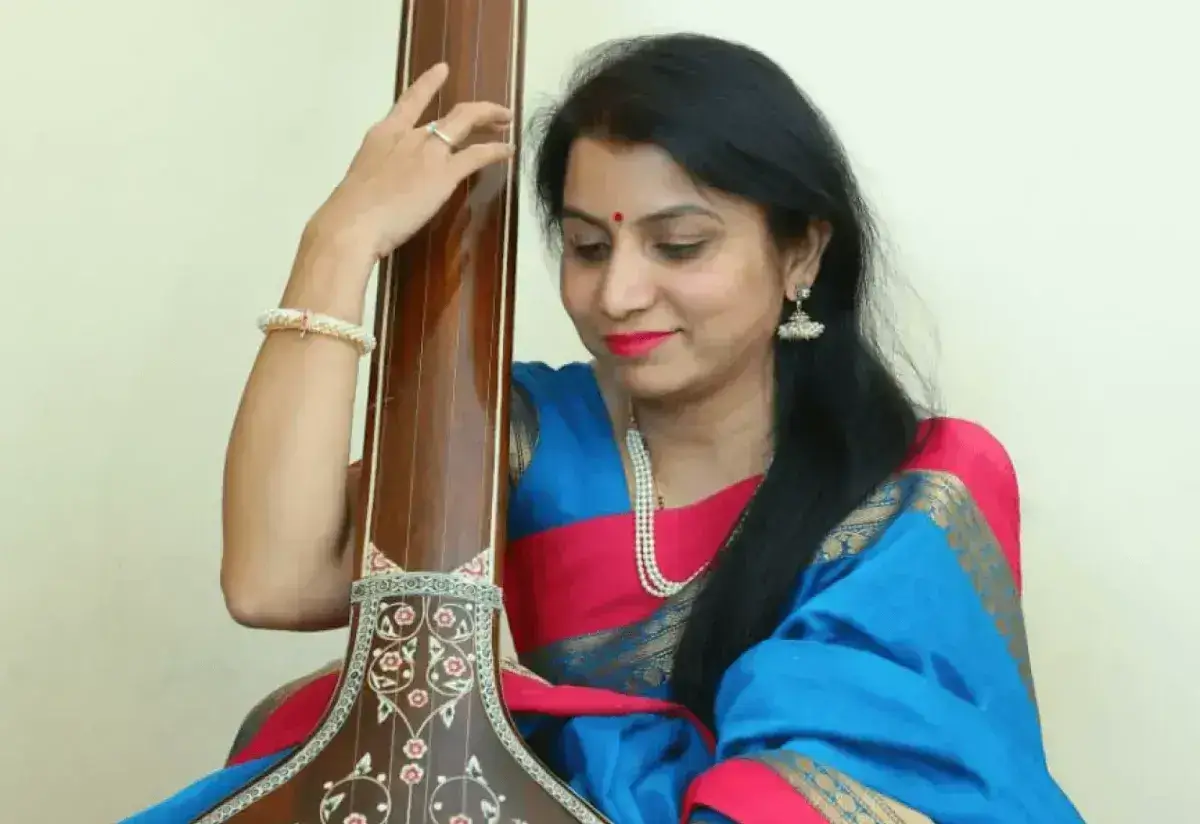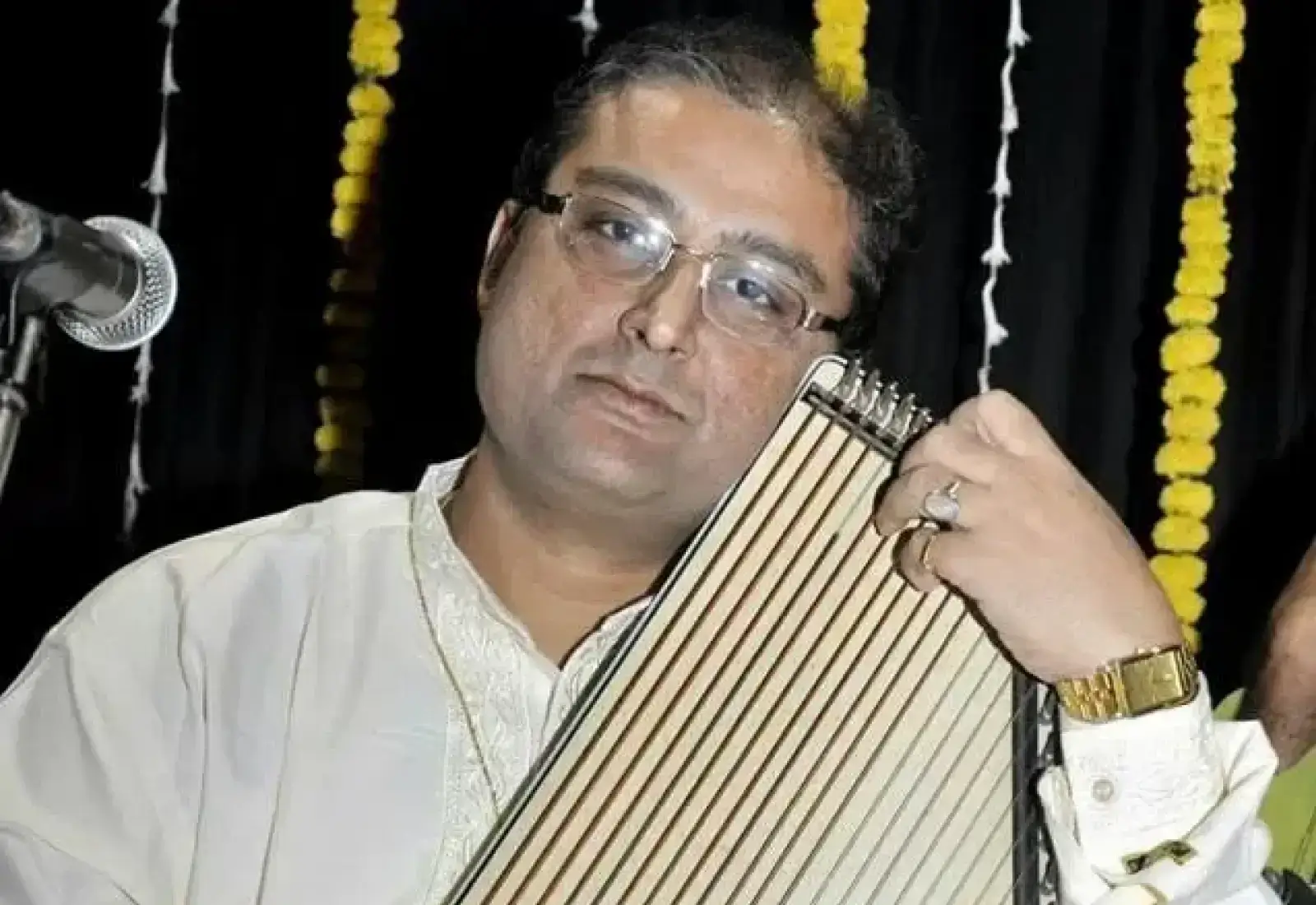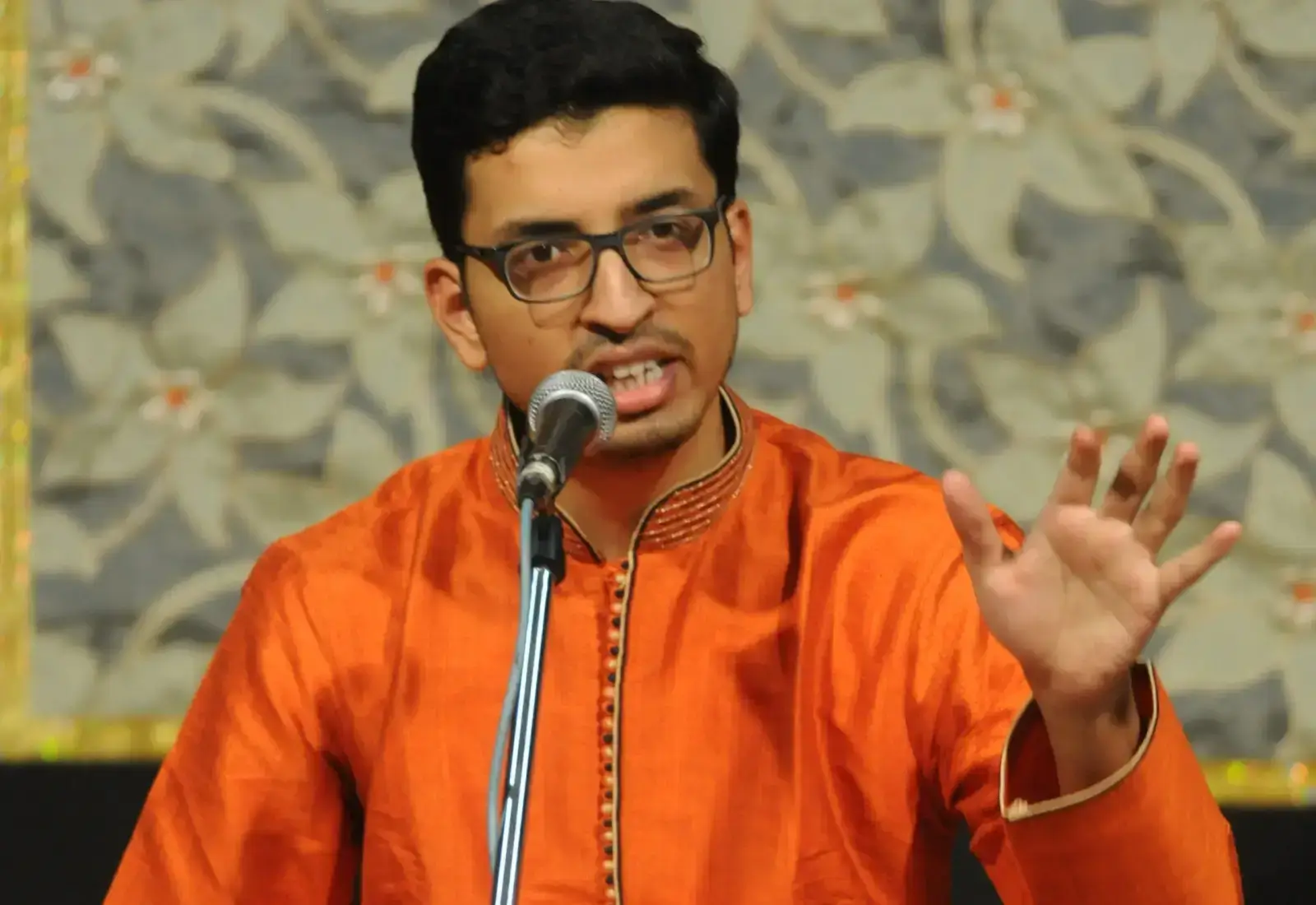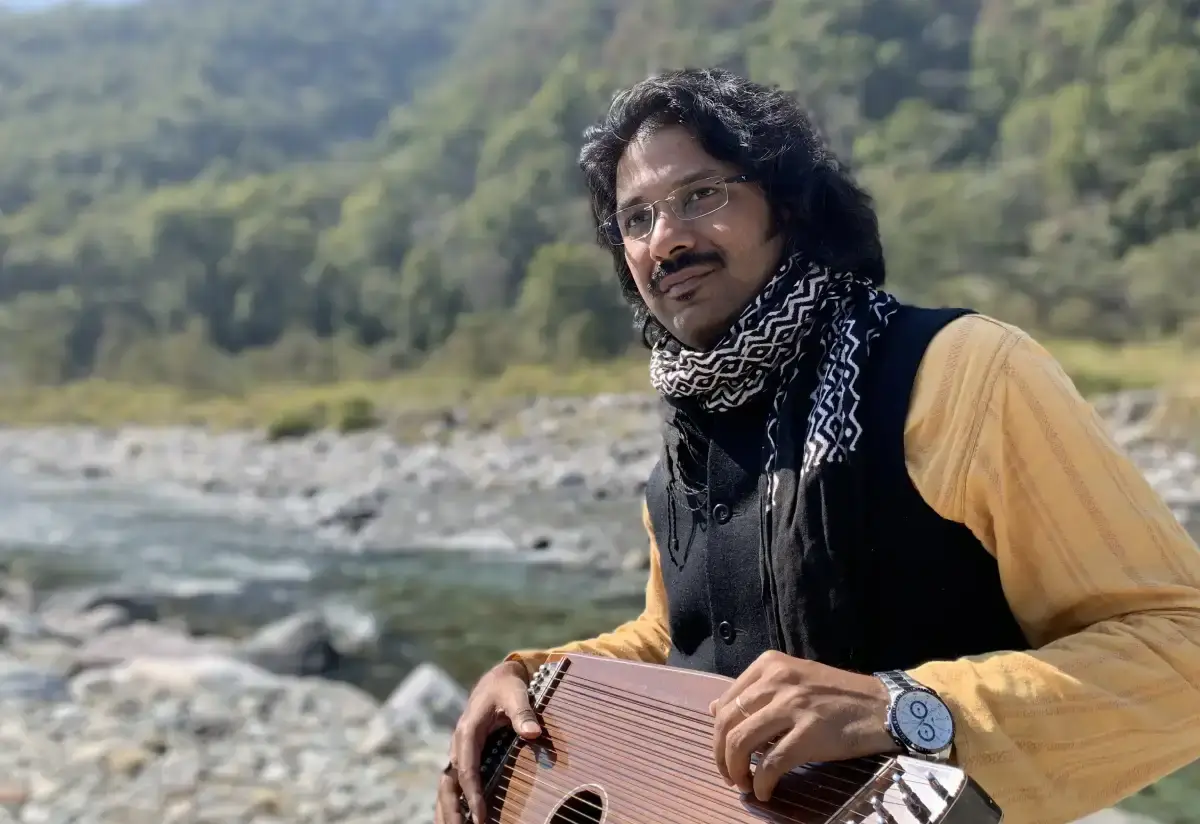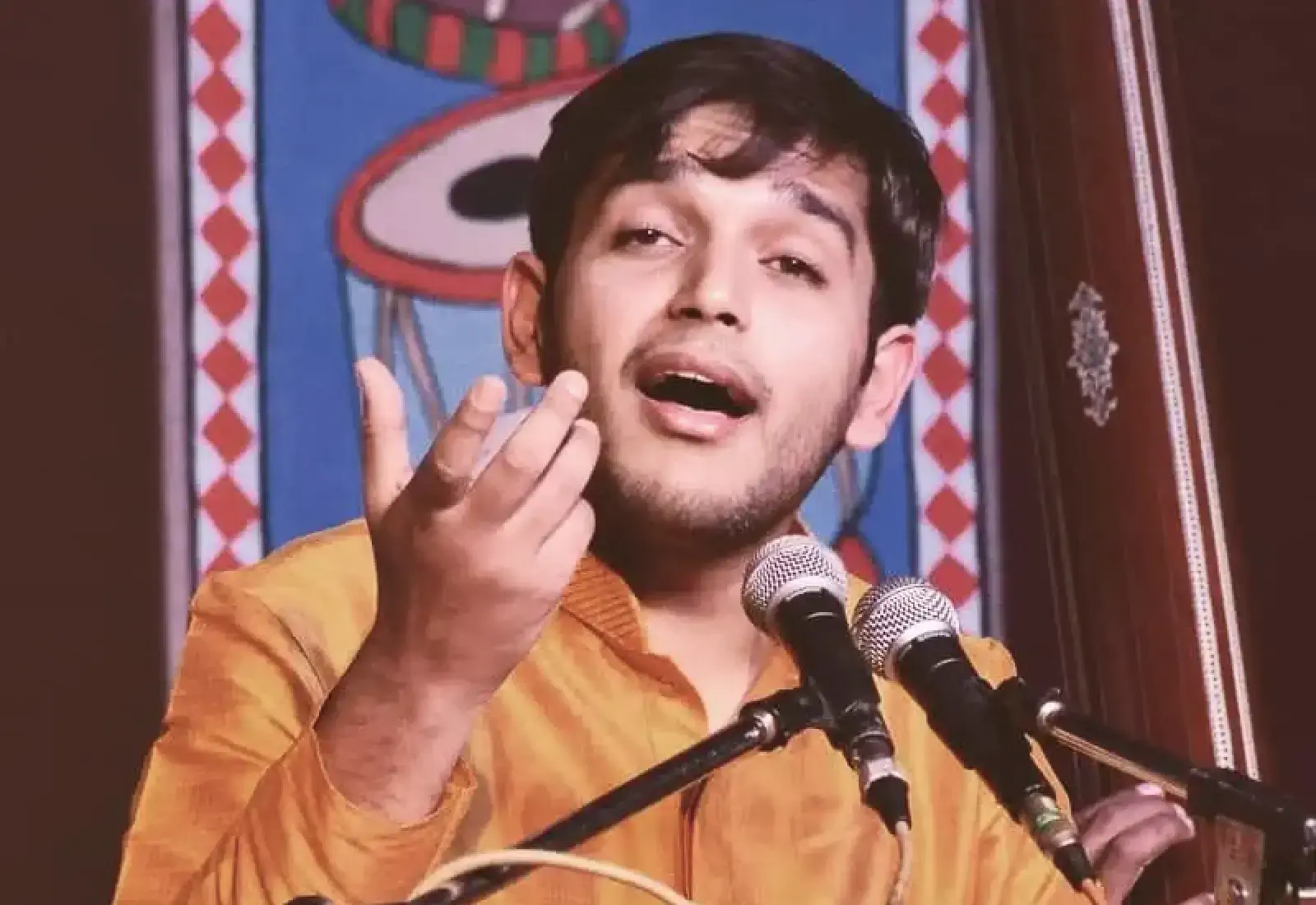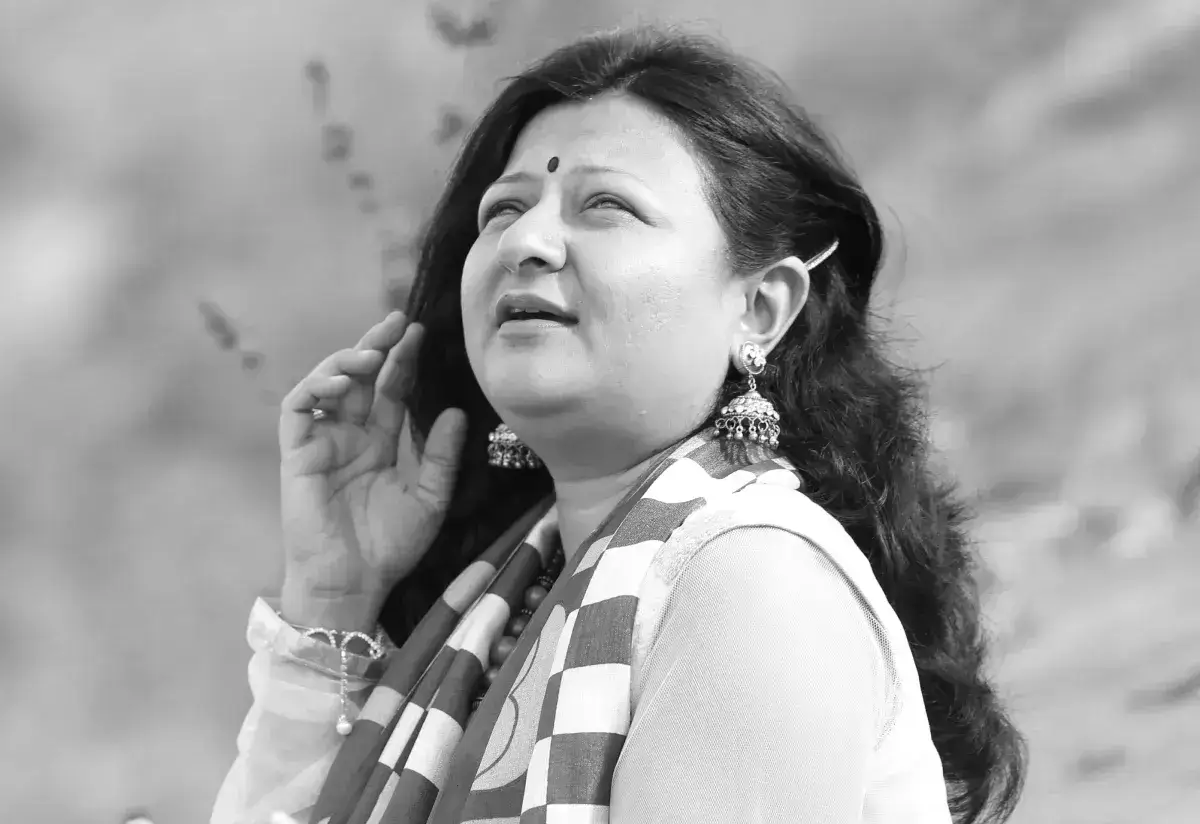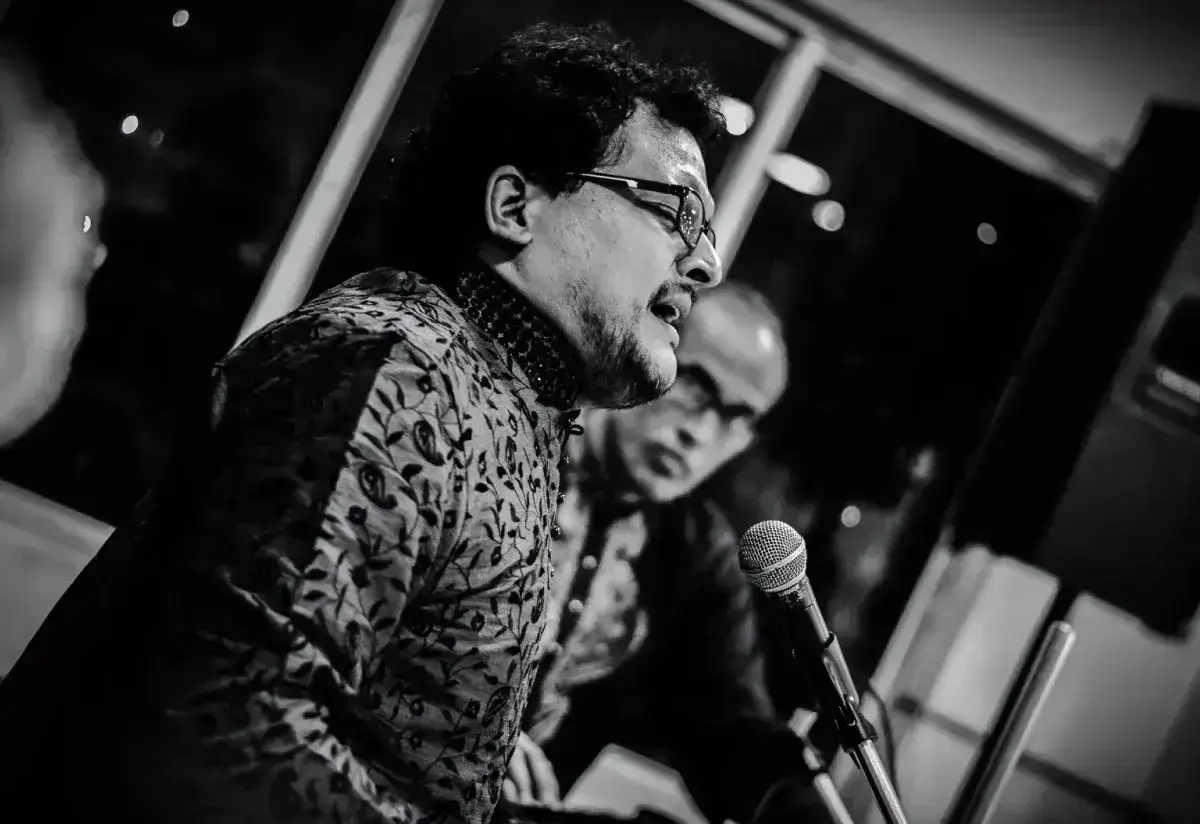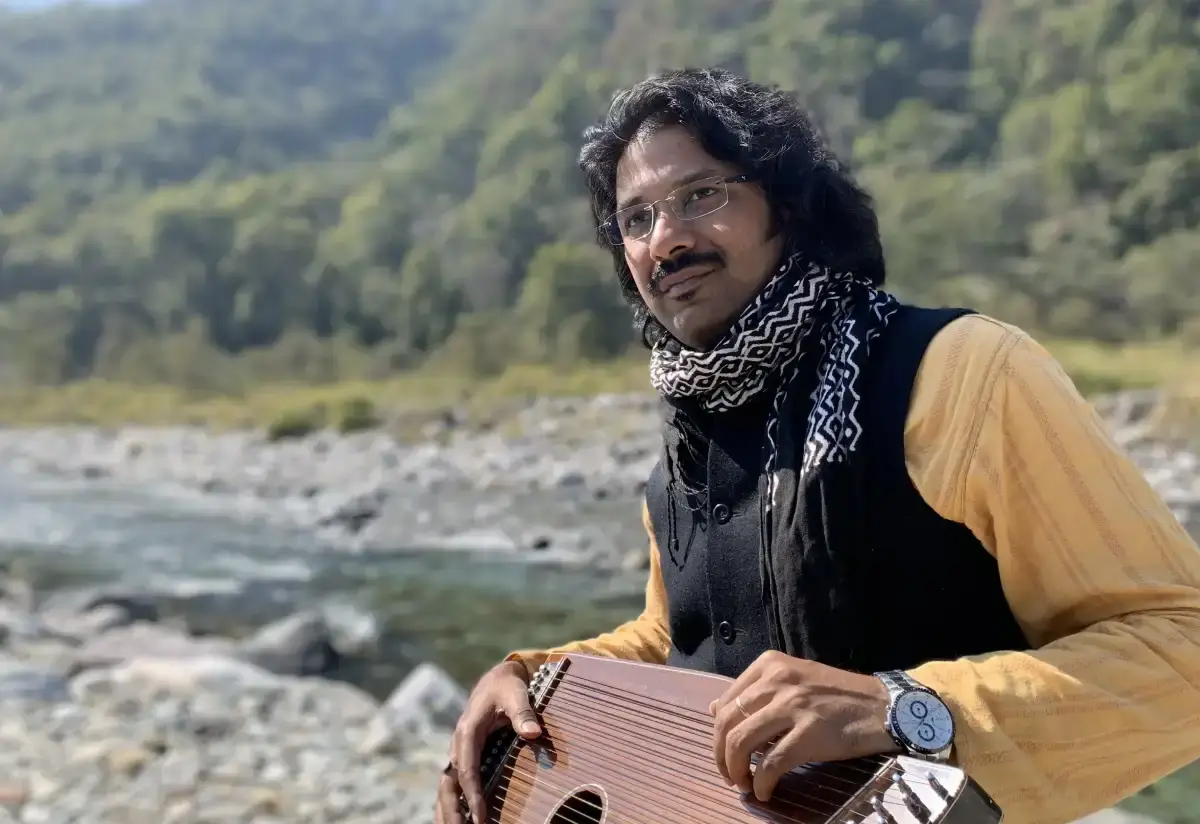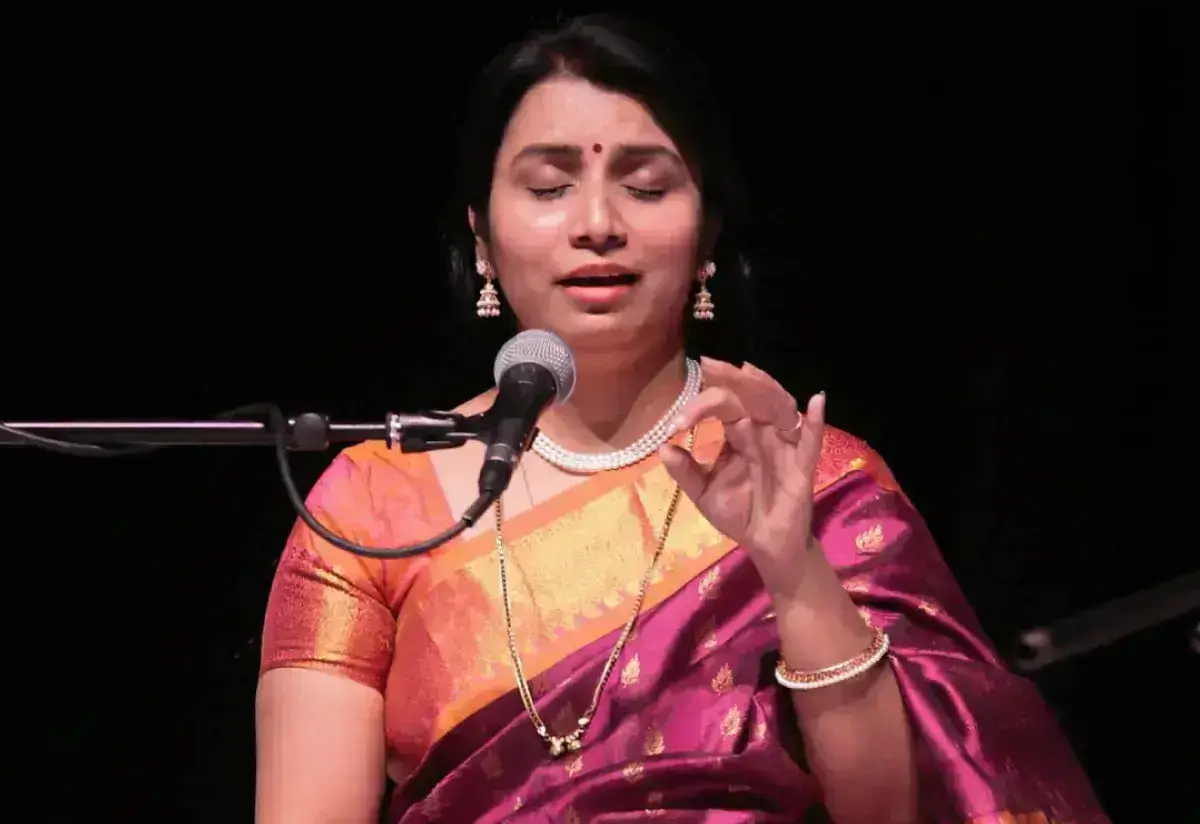Featured
Glossary - Hindustani Classical Music
A | |
Avartan | The basic repeated cycle of a Taal is called the Avartan. |
Alaap | Alaap is the aesthetic arrangement of notes which elaborates the nature of the raga with ornamentations and key phrases unique to the raga. |
Anibaddha Alaap | It's sung at the beginning of raga prior to singing compositions. Pronounced as, ‘Aa’, ‘Nom-Tom', etc. Also called as, Raga Vistaar. |
Akshar | Akshar is a unit of organization for a sequence of speech sounds. It is typically made up of a syllable nucleus with optional initial and final margins. |
Antara | It is the second stanza of a composition, usually including and emphasizing the upper notes of the Raag. |
Aaroh | Aaroh of a Raag is the sequence of the notes in ascending order between Madhya Shadja (S) and Tar Shadja (S'). |
Avroh | Avroh of a Raag is the sequence of notes in descending order between Tar Shadja (S') and Madhya Shadja (S) |
Alankar | Alankars literally meaning jewels are a combination of the notes of a Raag. Alankars follow a particular pattern of combination of notes like an ornament and are very effective while rendering Taans. |
Alaap | It is the development of a Raag through improvisation while observing all the laws of the Raag. |
Avirbhav | Avirbhav is to make visible the original form of the Raag. |
B | |
Bada Khayal | The first composition of a khayal performance in slow tempo. |
Bandish | A composition in Hindustani classical music, usually with two parts corresponding to the sthayi and Antara. |
Brij Bhasha | A dialect of Hindi was used in Brij where Lord Krishna was born and spent his childhood days. This is the most prominent language for compositions in Hindustani classical music. |
Bhavas | There are 9 Bhavas described in the Hindustani Classical Music/Dance forms: Bhakti (Devotional), Karuna, Veer, Veebhatsa, Vichitra, Hasya (Humour), Virah, Vairagya, and Krodh (Anger). |
Bol | A bol is a mnemonic syllable. It is used in Indian music to define the tala, or rhythmic pattern, and is one of the most important parts of Indian rhythm. Bol is derived from the Hindi word bolna, which means "to speak. |
C | |
Chatusra Taal | It is a type of Taal that denotes a group of 4 to 6 beats. |
Chaturang | Chatur means four and anga mean parts. A chaturang has four parts: khayal, tarana, sargam and tirvata. |
Chota Khayal | A composition in medium to a fast tempo that usually follows the bada khayal. |
G | |
Gharana | The tradition and a particular style of singing of a musical family. |
Gamak | Taan Renendering with Meend for Vakra Swaras. It can be heavy or light. e.g mgmRS in Raag Darbari Kanada. |
J | |
Jati | It is the classification of a Raag based on the number of notes employed in its Aaroh and Avroh. |
Jugalbandi | A duet in performance or two artists performing together. |
K | |
Khali | A wave of the hands is called Khali. Khali has a characteristic relationship with Tali. |
Khanda Taal | It is a type of Taal that denotes a group of 5 beats. |
Khand | A Taal typically has Khands (columns) divided by bars. Each interval between the bars is called a Khand. |
Koot Taan | The notes do not remain in order. Therefore, the nature of Koot Taans is complicated. |
Khatka | If several notes are rendered in one stroke it's called a Khatka. |
Komal Swar | A soft or flat note. |
L | |
Laya | Laya is a particular tempo of a rhythm in Hindustani Classical Music. |
M | |
Matra | The basic counting unit of a taal. |
Mishra Taal | Combination of the .different taals in a single rhythm. |
Mishra Taan | Combination of sapat and koot taans. |
Mukhda | Mukhda is the chorus of the songs (the first few lines which keep repeating throughout the song) |
Meend | A particular form of embellishment/ornamentation that involves a smooth flowing passage from one note to other in ascending or descending order. It delivers the most authentic flavor of Hindustani Classical music. |
Mukya Ang | Essential notes without which the Raag cannot manifest itself. |
Murki | In rendering a note if we simultaneously derive it from both upper and lower notes as in e.g., NSRS or RS, NS giving a rounded note, it is called a Murki. It is a kind of tonal embellishment. It is natural to many voice types and adds beauty to renderings. |
N | |
Nibaddha Alaap | It's embedded within the composition. The performer has a choice of singing the Alaap either after the entire composition or after every stanza. The pronunciation is in three ways—‘Aa', ‘kar’ or ‘Nom-Tom’. |
Naad | A musical or cosmic sound. |
P | |
Pakad | Essential notes without which the Raag cannot manifest itself. |
Poorvang - Uttarang | Poorvang is the lower half of the octave i.e. S R G M and Uttarang is the upper half of the Octave i.e. P D N S'. |
R | |
Raag/Raaga | The melody with an overall mood or environment producing a lasting impression while entertaining or recreating the audience. A combination of different musical notes or Swaras in a particular sequence of ascending and descending makes a Raag. |
Rasas | There are 9 Rasas described in the Hindustani Classical Music/Dance forms: Bhakti (Devotional), Karuna, Veer, Veebhatsa, Vichitra, Hasya (Humour), Virah, Vairagya, and Krodh (Anger). |
S | |
Sum | The first and most important beat of a Taal. The arrival of the sum is often the point where rhythmic tension is released. |
Shudha Taan | The notes are placed in an order in one or more octaves. It is a synonym for Sapaat Taan. |
Sapaat Taan | The notes are placed in an order in one or more octaves. It is a synonym for Suddha Taan. |
Swar | Swar means a musical note. An Octave has 7 basic notes which are universally known as Do Re Me Pha So La Ti. In Hindustani Classical Music, the 7 basic (or shuddha) notes are Sa Re Ga Ma Pa Dha Ni. In addition to these basic notes Re Ga Dha Ni have their respective Flat or Komal Notes and Madhyam has a Teevra Note. Shadja and Pancham do not have any Komal or Teevra notes. This makes a total of 12 notes in the Octave. |
Sargam | The composition uses the names of the notes instead of words. |
Samvadi | Samvadi note is the second most significant note of the Raag. Vadi note, along with the Samvadi note usually brings out the uniqueness of the Raag and its mood. |
T | |
Taal | Taal (Tala) is the regular rhythmic pattern of equally placed beats of any composition. The word Taal literally means ‘a clap. In Hindustani Classical Music, the Tabla is the most commonly played musical instrument to keep Taal. |
Taali | The pattern of clapping of hands is called Taali. Each Taal has a particular pattern and number of Taalis. |
Tisra Taal | groups of 3 or 6 beats |
Tithai | The musical phrase sung or played thrice to arrive at the Sam is called a Tithai. |
Theka | The set pattern of Bols and Angas which define a Taal is called the Theka. |
Taan | Taan means fast melodic passage / improvised vocal phrase. It originates from the Sanskrit word ‘tan’. Taans are generally rendered at the end. Voice training is a must and indispensable for the effective rendering of Taans. A Taan emanating from the same group of swars can be made to sound different with bal (emphasis) on different swars. |
Tanait | A singer who can effectively render Taans is known as a ‘Tanait’. |
Tirobhav | Tirobhav is deviating from the original form of the Raag by showing glimpses of a nearby Raag. |
Tabla | The main percussion instrument in Hindustani classical music, which consists of a pair of tuneable hand-played drums. |
Tanpura | A popular accompanying musical instrument that provides the drone while singing. |
Tarana | A composition that doesn't have any words and poem but syllables such as 'ta na na na dere na' are used. |
Thaat | Thaat is a system of organization and classification of Raagas of Hindustani Classical Music. In past, many musicians tried to classify the Raagas into categories. The modern Thaat system was created by Pt. Vishnu Narayan Bhatkhande (1860-1936), one of the most influential musicologists of Hindustani Classical Music. According to Pt. Bhatkhande, each one of the several traditional Raagas is based on or is a variation of, ten basic Thaats. These ten thaats are Bilawal, Kalyan, Khamaj, Bhairav, Poorvi, Marwa, Kafi, Asavari, Bhairavi, and Todi. While this Raag Classification theory (into 10 Thaats) is not accurate, it still serves as an important classification device. |
Thumri | The most popular light-classical genre of Hindustani classical music. |
Time of Raag | There is a specific time period for a Raag during which it should be rendered. The Time Cycle employed in Raagas rendering begins at 6 am and ends at 6 pm for the day and for the night beginning at 6 pm and ends at 6 am the next day. Each cycle (day & night) is divided into time periods of 3 hours each called Prahar. So there are 4 Prahars in the Day Time Cycle and 4 Prahars in the Night-Time Cycle. Apart from this, there are many Raagas that are rendered in specific seasons, for example, Basant, Bahar, etc are the Raagas rendered in the Spring Season while Malhar, Megh, Surdasi-Malhar, Gaud-Malhar, etc are the Raagas rendered during Rainy Season. There are some Raagas which can be rendered at any time also called Sarv-Kalik Raagas or All-Time Raagas namely Raag Bhairavi, Pahadi etc. |
V | |
Vakra Taan | Vakra Taan is a kind of Taan. it signifies the singer’s improvisation on a particular melody, rhythm or composition. |
Vadi | Vadi is the most dominant or important note of a Raag. If Raag is a kingdom, Vadi note can be considered as the King. Vadi is the most used note of the Raag and is also used as a resting note while rendering the Raag. |
Varjya Swar | Notes not employed in a Raag are called Varjya Swaras or Forbidden notes. e.g. Raag Hans-Dhwani has Madhyam and Dhaivat Varjya and so its jati is Audhav-Audhav. |
Vilambit | Vilambit means rendering in slow tempo. Bada khayal is rendered in vilambit laya. |
Vishranti Sthan | These are the resting notes for ending Aalaps and Taans while rendering a Raag. Shadja or Sa is obviously a note as Vishranti Sthan. There could be other notes too as Vishranti Sthans in a Raag. |


